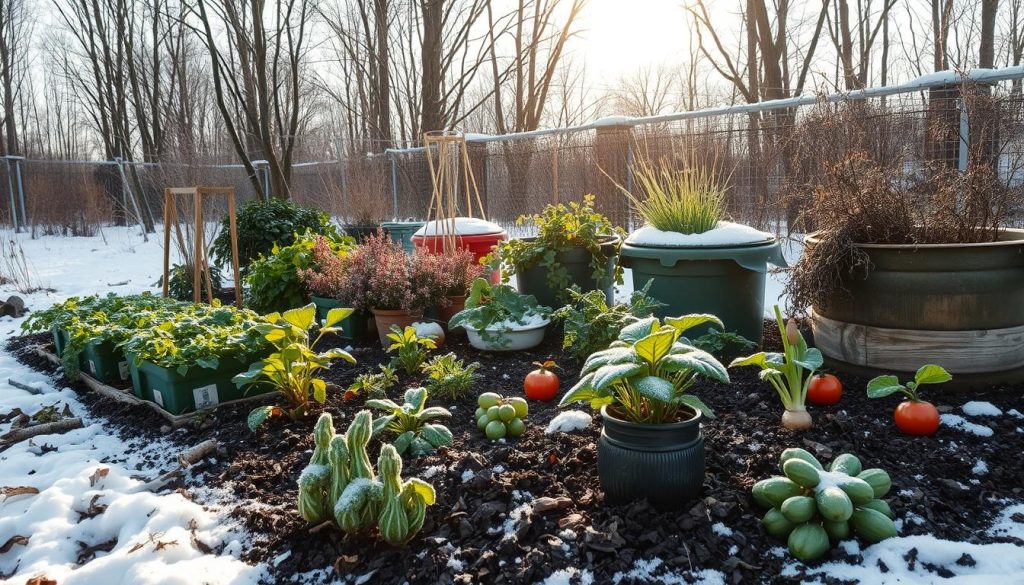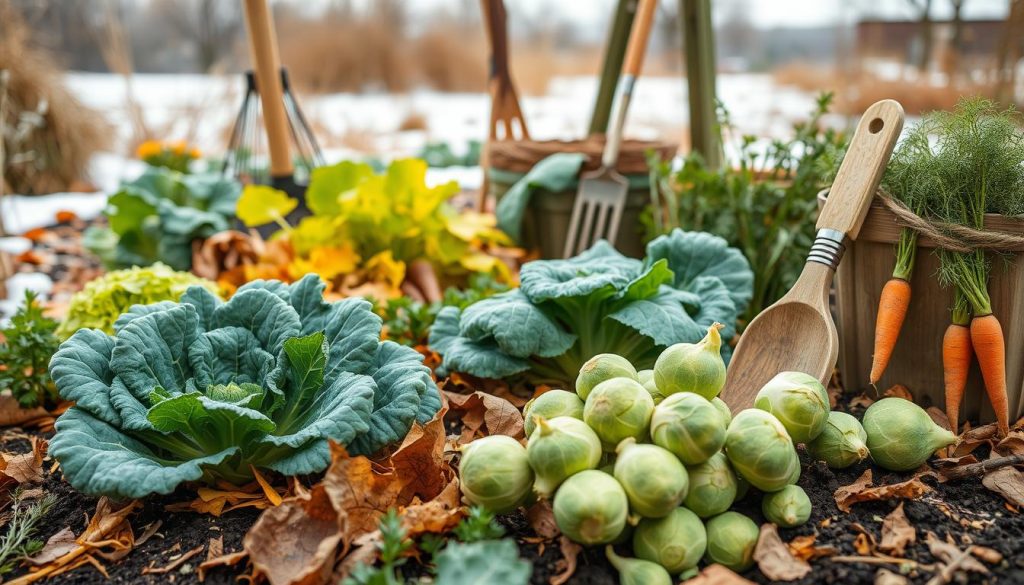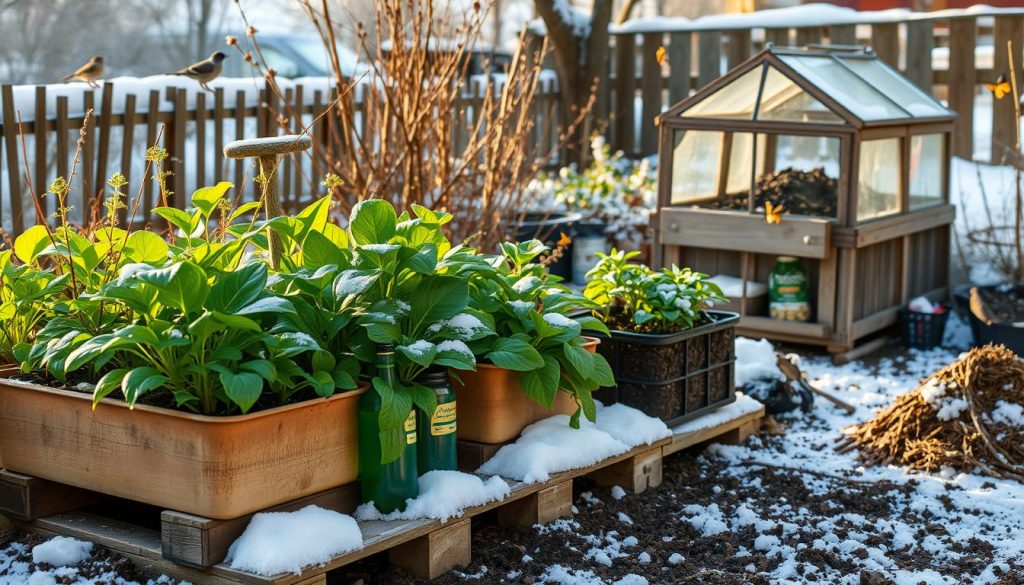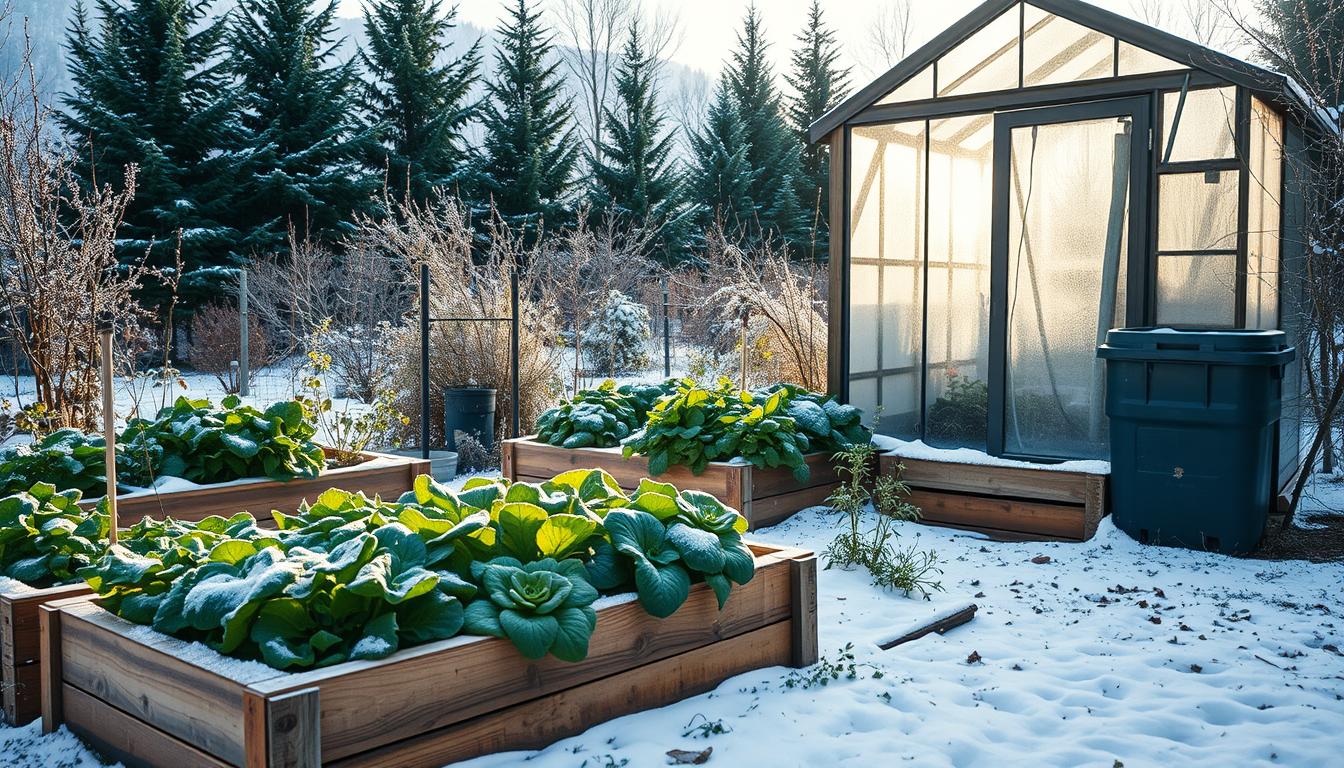I’m excited to share my experience with sustainable winter gardening. I’ve learned zero-waste tips that make my garden thrive, even in the cold. By using eco-friendly practices, I’ve cut down on waste and made my outdoor space more sustainable.
As a gardener, I’ve seen how important sustainable winter gardening is. I’m eager to share my knowledge with others. With the right tips, anyone can have a beautiful, sustainable garden, even in winter.
Using eco-friendly methods in my daily routine has reduced my environmental impact. It’s also made my winter garden stunning. In this guide, I’ll share my favorite tips for a zero-waste winter garden. I hope to help you start your own eco-friendly journey.
Introduction to Zero-Waste Gardening in Winter
Exploring winter gardening, I’ve learned the value of reducing waste. Zero-waste gardening not only cuts down on environmental harm but also makes my garden healthier. It’s all about making smart choices with what we use.
Zero-waste gardening means less trash in landfills. It also saves resources, cuts down on harmful emissions, and boosts nature’s variety. It’s a win-win for our planet and our gardens.
Why Winter Gardening?
Winter gardening lets us grow crops that love the cold. With the right plants and zero-waste methods, we can harvest more while harming less. Winter gardening offers many perks, like:
- Extended growing season
- Improved soil health
- Increased crop diversity
- Reduced pest and disease pressure
The Benefits of Going Zero-Waste
Zero-waste gardening makes our gardens greener and more eco-friendly. It brings many advantages, like:
Reducing waste in winter gardening is key to a greener garden. Zero-waste gardening helps us lessen our environmental impact, save resources, and support nature’s variety. It’s a long-term goal that needs careful planning and a commitment to making better choices.

Preparing Your Garden for Winter
Winter is coming, and it’s time to get your garden ready. Start by clearing your garden beds and using dead leaves and compost. These steps help make your soil rich and reduce waste. This way, your garden will stay healthy and green even in the cold.
First, clean up your garden beds. Get rid of any debris, dead plants, or weeds. This makes your garden fresh and stops diseases from spreading. Then, use dead leaves and compost to make your soil better. These natural items add nutrients and help your plants grow well.
Assessing and Clearing Your Garden Beds
- Remove debris, dead plants, and weeds from your garden beds
- Inspect your soil for any signs of disease or pests
- Take note of any areas where the soil may be compacted or drained poorly
Utilizing Dead Leaves and Compost
Dead leaves and compost are great for your garden in winter. They make your soil rich and help plants grow. Use compost to feed your plants instead of chemical fertilizers. Also, use dead leaves as mulch to keep moisture in and weeds out.
By following these steps, you can have a garden that’s green and healthy all winter. Always choose eco-friendly gardening methods. This way, your garden will be productive and waste-free all year.
Choosing the Right Winter Crops
When planning my winter garden, I look for crops that do well in the cold. I choose crops that are hardy and yield a lot, cutting down on waste. This way, I can store or preserve food, reducing waste and making the most of my harvest.
Top Zero-Waste Vegetables for Cold Months
Broccoli, kale, and carrots are my go-to winter crops. They taste great, are easy to grow, and keep well. Here’s why they’re great for my garden:
- They grow a lot, so I don’t need to plant as much.
- I can save and use them later, cutting down on waste.
- They’re tough and grow well in the cold, so I don’t need to use harmful chemicals.

Tips for Using Heirloom Seeds
Using heirloom seeds is another smart move for my winter garden. These seeds can be saved and used again, saving me money and reducing waste. It also helps keep plant diversity alive, keeping my garden healthy and strong.
Creative Ways to Reduce Waste
Exploring sustainable winter gardening, I found many ways to cut down on waste. One great method is to use old items as garden tools. This way, we avoid single-use plastics and reduce waste. For instance, old plastic containers can become mini greenhouses. Wooden spoons can mark plants.
Another smart move is to make DIY winter garden covers. You can use recycled materials like old blankets or tarps. These covers protect plants from bad weather. Using sustainable materials helps our gardens grow strong and green. It’s good for the planet and supports eco-friendly gardening.

- Composting food waste to create nutrient-rich soil
- Using rainwater collection systems to reduce water waste
- Creating a winter greenhouse using recycled materials
These creative ideas help gardeners lessen their environmental footprint. By adopting sustainable gardening practices, we keep our gardens healthy and vibrant. It’s all about reducing waste and caring for our planet through gardening.
Maintaining Your Zero-Waste Garden
With a bit of care, your zero-waste winter garden can flourish even in cold weather. Keeping up with garden tasks is crucial. I make a checklist to avoid missing out on important jobs, like adding mulch or checking for pests.
Seasonal Checklists for Garden Care
Seasonal checklists help me remember garden care tasks. They remind me to protect plants from cold and to harvest and preserve crops. This way, I can enjoy a full zero-waste harvest, no matter the weather.
Getting Creative with Winter Recipes from the Garden
Winter gardening lets me get creative in the kitchen. I love roasting root veggies, making winter soups, or baking vegetable pies. These recipes let me enjoy my garden’s bounty long after winter.
Following these tips keeps my zero-waste garden thriving. It’s a sustainable hobby that gives me fresh, healthy food all year. With planning and creativity, winter gardening is just as rewarding as gardening in warmer months.

